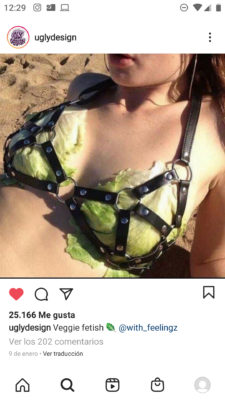Search
To search for an exact match, type the word or phrase you want in quotation marks.
A*DESK has been offering since 2002 contents about criticism and contemporary art. A*DESK has become consolidated thanks to all those who have believed in the project, all those who have followed us, debating, participating and collaborating. Many people have collaborated with A*DESK, and continue to do so. Their efforts, knowledge and belief in the project are what make it grow internationally. At A*DESK we have also generated work for over one hundred professionals in culture, from small collaborations with reviews and classes, to more prolonged and intense collaborations.
At A*DESK we believe in the need for free and universal access to culture and knowledge. We want to carry on being independent, remaining open to more ideas and opinions. If you believe in A*DESK, we need your backing to be able to continue. You can now participate in the project by supporting it. You can choose how much you want to contribute to the project.
You can decide how much you want to bring to the project.

“Neither modernity is the continuity of the past in the present, nor is today the son of yesterday: they are its rupture, its negation. Modernity is self-sufficient: every time it appears, it establishes its own tradition”.
Octavio Paz, Children of the Mire (1974).
Who would have thought that some lettuce leaves would have the self-sufficiency to weave a brassiere and turn it into a piece of design? A design that, at first immortalized in an out-of-focus snapshot and discolored by an excess of flash, is only a piece of the many that make up the cartography of “bad taste”. The battlefield of shock and scandal of our generation is par excellence the virtual world, a space where new aesthetic paradigms are configured and disseminated. Within the cosmos that is the Internet, Instagram is a microcosm of visual stimuli that make up viral culture. This platform allows each user to become a curator of their personal archive, and at the same time it functions as a space for cultural production.
As we enter the second decade of the 21st century, nothing evokes bad taste like the aesthetics of the 2000s, far enough back to be out of fashion, and too recent to be appreciated again. The visual culture of those years is still synonymous with bad taste, still to be viewed with irony. Even so, the everyday life immortalized in photos of lousy resolution and the capture of strange (or simply old-fashioned) objects ends up seducing us. These are the first digital photographs from a time when the Internet meant infinite possibilities and there was no cloud on the horizon of our future. Abundance of anonymous images, often absurd, that circulate through the social networks without any artistic ambition or mastery of the technique and produce in us, who have been nourished by what we believe to be good taste, a certain rejection. It is the shock produced by obsolete, old-fashioned, ugly objects, but which at the same time make us laugh and appeal to our nostalgia. They are catalytic productions of aversive reactions, scenes that oscillate between rejection and affection at the same time.
Under this label of kitsch, two types of Instagram users are recognized: curators and producers. The first ones are understood as users who configure galleries of visual elements from images of individuals. Curators of virtual ready-mades art galleries, who identify the common aesthetic denominator and these become archetypes of the most spontaneous (anti)aesthetics of the social networks. Under the slogans “Museum of Whatever” or “Only the crème de la crème”, the profiles of @nik_gallo and @uglydesign [Fig. 1] already anticipate a sarcastic and joking mood that will be absorbed by the producers. They are the authors aware of the trash-images, who have nurtured their aesthetic taste in the most virtual kitsch and once discovered by the curator profiles, they become part of the artistic circuit of the shabby things. Both users share some aesthetic precepts and approach their productions with irony. For example, @brnjn_ chooses to label her profile as an “exotic car rental” page, although we do not find any car in her profile, nor the will to include one. This is the irony that establishes the contradiction as the cornerstone of a new paradigm.
Fig 1. Panoràmica @nik_gallo and @uglydesign
The process of viralization of the (anti)aesthetics of kitsch today, and specifically on Instagram, is understood from the aforementioned trash-images, the absurd photographs, made and found almost by accident in the virtual dimension. A virality marked by the dynamics of image capitalization, from which not even the most kitsch of productions is out of danger. The will of the producers to want to customize past imaginaries and create new ones would be one of the starting points of this commercialization.
How does one go from a spontaneous, anonymous and absurd image to a viral trend and the inexorable commercialization of these images, which now become objects? In order for these images to go viral, they first need to be rescued from the infinite void that is the Internet with the intention of challenging aesthetic canons. If Instagram is the social network where you share the best of yourself, what is more subversive than posting the most kitsch and disgusting images possible? This is the work of the curators. Thus, little by little, a virtual avant-garde is formed, based on the irony and rebelliousness of embracing ugliness in a context where physical beauty is desperately desired and sought after by any means. However, any trend can pass to the screens of a wider and wider public, through connections of likes, messages and followers. The growing appreciation for this kind of ugliness attracts the attention of brands, which, like vultures, relentlessly search for new visual trends to capitalize on. Thus begins the progressive commercialization of virtual kitsch, which is refined to please the tastes of a wider public outside artistic circles. What begins as a subversion of design is absorbed by design itself, there is a progressive aesthetization of forms that were never meant to be visually pleasing, but to place the viewer at a crossroads between attraction and repulsion. Productions such as those of @keefpalas or @actually_existing [Fig. 2] are governed by this aesthetic will and are accomplices of the implantation of luxury on forms that were originally popular.
Fig 2. Panoràmica @keefpalas and @actually_existing
In order to make them desirable for the classes with greater purchasing power, generally external to the virtual avant-garde, these forms are stripped of their shabby factor, thus producing a contradiction with kitsch. It must be said that, despite this embellishment, they still do not seek to appeal to a massive and homogeneous public, but are small and independent businesses, offering few objects at very high prices, surely inaccessible to lovers of the absurd who started playing with trash-images on Instagram. The intrusion of new stores on this platform has been favored in the latest updates of the application, which urge users to buy, rather than share visual content. This leads us to wonder what the next step in the perversion of shabby (anti)aesthetics is. Is it possible that large multinationals will join the capitalization of the absurd from these small, independently designed Instagram brands? Will we one day find shoes made of toothpaste or earrings made of sardines on Zara’s website? It’s hard to know how a big company could create a desire for ugliness in the mass, homogenized —and fictional— audience it desperately seeks to appeal to. Once again, the most subversive and apparently unmarketable discourses are phagocytized by capitalism, which returns to the precarious masses the forms they themselves generated.

Bruna Bassó, Judith Pijuan, Alba Alarcos. Daughters of the so-called Z generation, Judith, Bruna and Alba say that Z comes from zoom. Undoubtedly, the most precious tool in the sea of links and likes of the virtual world that has seen them grow up. Guided by an aesthetic – but above all anti-aesthetic – longing, they enjoy exploring the thousands of images that approach them daily and the doors they open: new profiles, incendiary tweets, the memes of the last congress or exotic car rental shops.
"A desk is a dangerous place from which to watch the world" (John Le Carré)